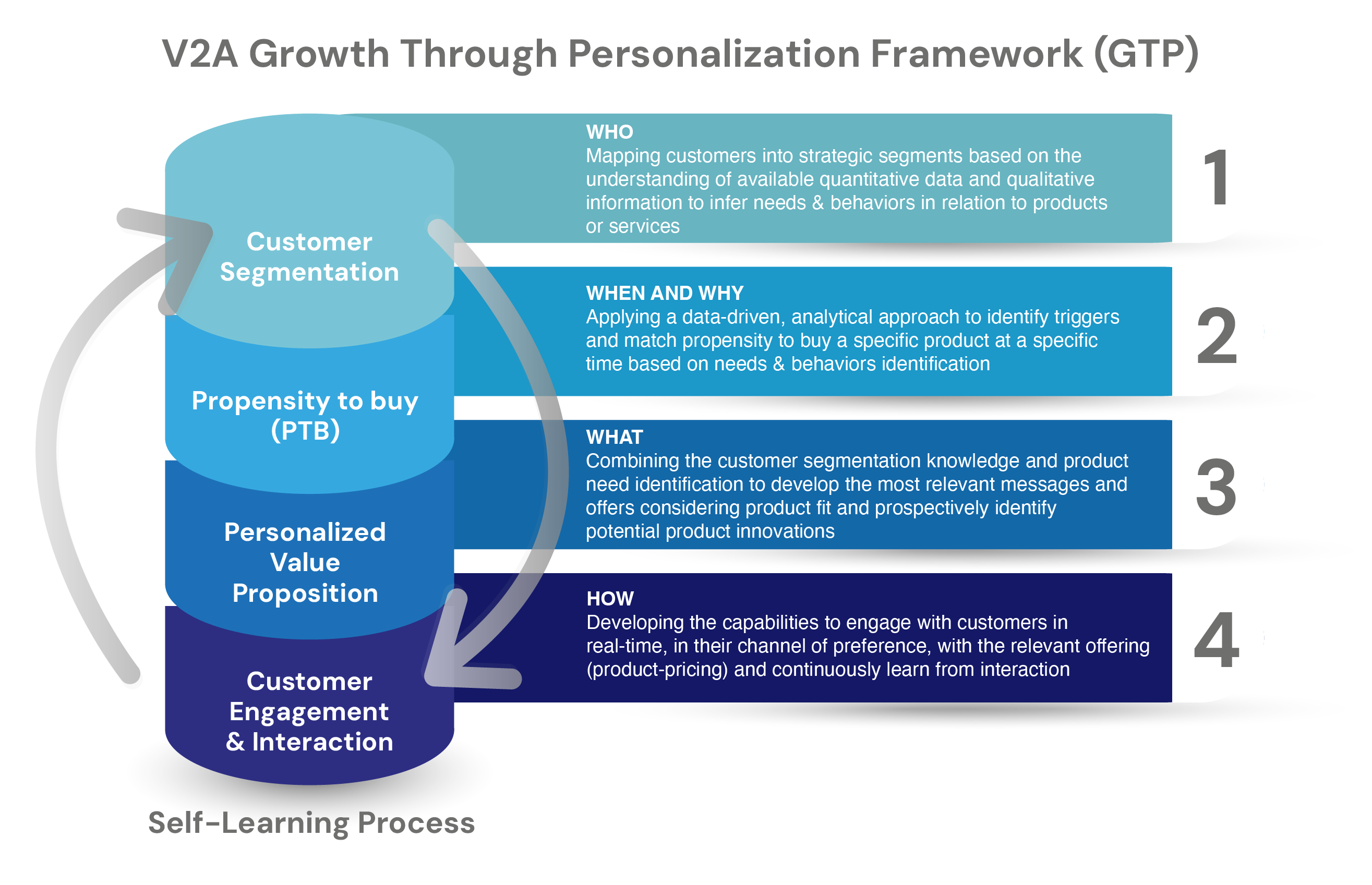Marketing has evolved significantly over the past two decades. Any marketer from the early 2000s would agree that a solid marketing strategy should include a deep understanding of your audience (the "who"), usually segmented to ensure a clear message, highlighting the value proposition of the product or service (the "what"), and a plan to ensure availability at the product’s moment of purchase and/or moment of use (the "how").
Today, this approach has not only evolved but has also become more sophisticated. In addition to the "Who," "What," and "How," marketers must now consider the best option of "When," "Where," and "Why".
Modern customers expect everything instantly, as reachable as possible, often just a click away, and highly personalized to meet their specific needs. This increased level of expectation means that the product experience can no longer begin at the traditional moment of truth (trying or using); but instead, start the moment customers begin to think or talk about the product, sometimes before they have realized a need for it.
The good news, for marketers and business managers, is that creating a personalized and “faster than thought” experience is now possible thanks to the availability of more customer data points (both quantitative and qualitative) at a personal level, along with data from a wider variety of sources than before, including interactions through online shopping channels. With this increase in availability of customer data (first-party or third-party), and recent advancements in business analytics and artificial intelligence, personalization has become an essential tool for staying competitive, enabling cross-selling, growing the customer base, and solidifying a relationship with existing customers.
Using a "Growth Through Personalization" (GTP) framework, as the one seen in Figure 1, businesses that have been able to dive into personalization successfully, maximize the data at their disposal, and identify the right moments to offer the right products or services, via the right communication channels.

To better understand the framework, we will create a hypothetical example of its potential implementation.
Example: we will use a Pharmacy/ Convenience Store Retail Chain called “OnTheGo”.
Objective: increase sales by engaging with current clients and cross-selling other categories, as well as increasing the frequency of purchase
- Customer Segmentation (WHO)
The journey begins by understanding the best way to segment the market from this specific industry perspective, including the strategic perspective that makes sense for OnTheGo to achieve their business objectives. This involves categorizing the OnTheGo’s current customer base into strategic groups, for example, studying behaviors across multiple pre-defined variables, going beyond traditional segmentation factors like age or gender.
For instance, OnTheGo could have already recognized a potential strategic segment by analyzing purchasing data related to pre-natal vitamins, baby care products and/or children's toys. The data suggests that a promising segment could be parents or soon-to-be parents: the “parenting” life stage. And probably, for OnTheGo, customers in different life stages or family stages, for that matter, could be an avenue for segmentation.
In this phase, besides segmenting the customer base into strategic categories, we should start organizing all available data around the selected segmentation to deepen our understanding and start identifying what triggers customers to buy specific products or services.
WHO: parents or soon-to-be parents. The “parenting” life stage as a key segment for this example.
- Propensity to Buy Based on Needs & Behaviors (WHEN & WHY)
To understand the propensity to buy, OnTheGo needs to study which events trigger (needs) certain purchases or visits to the stores, and under which circumstances these events have occurred in the past within a specific customer segment, so we can identify them faster and therefore offer an appealing experience and cross sell other products or services, either at the point of sale or online.
If we take our previous example, OnTheGo could identify which customers are in a “Parenting life stage", which would be triggered by a purchase of prenatal vitamins; then, through advanced analytics, correlate this event with other related purchases, such as diapers, baby food, baby care products, or toys, at different intervals of three, six, or even nine weeks prior to or after the vitamin purchase. This analysis could uncover patterns related to the timing, frequency, combination of products, and budget considerations of purchases, as well as variables like quantity, size, and other not so obvious related product categories purchased during those occasions for this specific segment. For example, the highest probability of a customer buying diapers could be related to pre-natal vitamins purchase four weeks prior.
These retrospective analysis and data sets can be used as the main input for predictive models (machine learning) to identify potential customers for cross selling the right products or services at the right time, improving the likelihood of increasing sales, improving customer experience and driving customer loyalty.
WHEN: for parents or soon-to-be parents, buying pre-natal vitamins represents an important (high probability) trigger to buy diapers and baby care products within the next three to six weeks. This info gives us an insight to target this segment at a more specific “WHEN”. Then, through machine learning techniques, we will identify these customers to ensure an attractive offer to drive sales at the right moment, for the right reasons for them.
- Personalized Value Proposition (WHAT)
Once we have identified the strategic customer segments (the “Who”), understand as better as possible what triggers their needs (the “Why”), and windows of time and/or frequency of these purchases (the “When”), the next step for OnTheGo is to develop personalized value propositions that speak directly to that specific customer… (The “What”).
Creating relevant and differentiated value propositions is a very knowledgeable topic for most marketers. The caveat here, for example, would be to use the information we learned from customer segmentation and propensity to buy analysis to develop even more tailored or customized content and offers that speak as directly as possible to our strategic target.
One application could be to identify key messages to cross-sell baby care products, and diapers to OnTheGo’s customers in the “parenting” life stage buying pre-natal vitamins; for which special campaigns and discounts tied to the purchase of a related category can be developed and launched “at the right time” based on the insights gathered from the predictive models.
WHAT: The “parenting” life stage customers, identified as those buying pre-natal vitamins, could be offered a personalized bundle that include diapers and baby care products, as well as coffee, energy drinks, or other products indirectly related to the life stage. This bundle could activate within the time frame with the highest probabilities for purchase (three to six weeks after the initial purchase), which will personalize the experience (OnTheGo knows what I’m going through), and enable customer loyalty.
- Customer Engagement & Interaction (WHERE & HOW)
The final step is customer engagement and interaction. To fully leverage the segmentation and value propositions, OnTheGo must develop capabilities to engage customers in real-time, through their preferred channels, either at the point of sale or on-line, and with the most personalized offerings.
From an online perspective, this approach includes the implementation of AI-driven tools to personalize emails, app notifications, and digital ads, among others, based on the propensity to buy modeling and customers' behavioral triggers. Through these capabilities, OnTheGo will also keep gathering data and learning from customers interactions, which will drive a learning cycle that will feed the segmentation, analytics and modeling moving forward.
At the point of sale, connecting key data information with the P.O.S check-out moment or rearranging some categories, depending on what we have learned, and leveraging the content from our best understanding of those strategic groups’ needs and behaviors could be one of the ways to apply personalization.
WHERE AND HOW: OnTheGo has learned that parents or soon-to-be parents are very receptive to digital content, very driven by discounts and willing to buy baby related products in advance, so the customer engagement technique could be a digital customer journey (e-mail or app) to engage them into the bundle program, incentivizing cross selling more directly when this specific customer be identified by the machine learning tool within a specific range of time.
Conclusion
By applying this framework, OnTheGo can expect:
- Improved sales through cross-selling by targeting customers with the right product offers at the right time. Past results from this effort, from our clients, amount to at least 3X in sales increase vs. no personalized campaigns
- Increased customer engagement and customer satisfaction through personalized and relevant customer experiences
- Efficient or lower marketing spending given that ROI from marketing investments will be higher when better directed to specific groups rather than trying to reach all customers
In today’s rapidly evolving marketplace, personalization is not just a luxury, it is the new normal! As we've explored, the "Growth Through Personalization" framework empowers businesses like OnTheGo to leverage customer data effectively, resulting in tailored marketing strategies that resonate deeply with customers. By understanding who your customers are, when and why they buy, and how to engage them meaningfully, you can unlock unprecedented growth opportunities.
Are you ready to transform your cross-selling approach and drive sales through enhanced customer engagement and personalization? Contact us today to schedule a consultation and start your journey toward increased sales and customer loyalty!
 Tatiana Mendoza
Tatiana Mendoza
